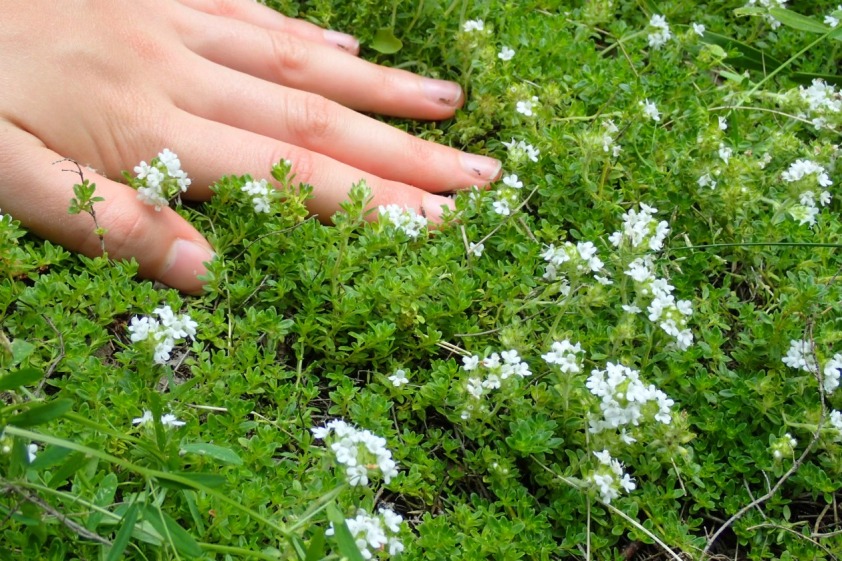
Map skills and nature study are two things that I like to incorporate regularly in our home-educating activities and I especially like it when I can combine the two. Nature study is a wonderful enrichment to any education. It expands awareness and understanding of the natural world, strengthens skills of observation, cultivates curiosity and a love of investigation, and lays a foundation for scientific study. But why incorporate maps? Is it really important for children to develop map skills? One might think that in this digital age, where information can be found right at our fingertips within seconds, that map skills are obsolete. Having these skills are unnecessary, right? Not at all! Reading maps and map making incorporate skills from across many areas of learning:
- Maps convey information that help us understand our world.
- Map making deepens that understanding.
- Maps are a way of sharing ideas and experiences.
- Making maps allow us to express our sense of place.
- Interpreting maps involves reading and math skills, builds spatial awareness, visual literacy and higher-order thinking.
Children as young as preschool-age can be introduced to the concept of maps. One way to do that is through books. There’s sure to be one here that will interest your child:
- Me on the Map, by Joan Sweeney
- Where Do I Live?, by Neil Chesanow
- Lucy in the City: A Story about Developing Spatial Thinking Skills, by Julie Dillemuth
- As the Crow Flies: A First Book of Maps, by Gail Hartman
- There’s a Map on My Lap!: All about Maps, by Tish Rabe
- Kat’s Maps, by Jon Scieszka
- Henry’s Map, by David Elliot
- Follow That Map!: A First Book of Mapping Skills, by Scot Ritchie
Once children have had some exposure to map concepts they can be introduced to map-making. The elementary years are a great time to get started.
If you would like to learn more about introducing maps and map-making to your child, I highly recommend the book MapMaking With Children by David Sobel.
Now on to the nature mapping activity…

Touchscapes
In this activity, you and your child will go on a texture hunt around your yard and then add samples of those textures to a hand-drawn map. You will need a copy of the “texture words” printable, a large sheet of paper or piece of poster-board/cardboard, a pencil, a basket or other container to hold nature artifacts, and glue (optional).
1. Review texture words
Explain that you are going on a texture hunt and look over the texture words printable with your child. Can he imagine what each one feels like? Does he have any to add?
2. Create a map
Find a spot outside from which you can view your house and yard. Take a few moments with your child to look around and talk about what nature you see and where things are in relation to one another. Draw a map of the area on a large sheet of paper or posterboard. It’s easiest for children to draw the house first. Do not worry about being perfect – this map is meant to act as a general guide and does not need to be exact or very detailed. If your child is very young, draw a map ahead of time and review it with him.
3. Go on a texture walk
With map in hand, take a walk around your yard. Pay close attention to the various textures of the nature you see. Is there a soft mossy patch? Do you have trees with rough bark? Smooth bark? Maybe there are some fuzzy dandelion puffs or prickly bushes. Stop to touch with your child and talk about how each thing feels. Encourage your child to use descriptive words and make comparisons (ie. rough like sandpaper, soft and squishy like a sponge, etc.).
4. Collect samples & add them to map
If appropriate, collect samples of the nature that you find on your texture walk. When you have finished your walk, ask your child to recall where each collected item was found. He can then place it on the map (and glue it on if desired) at the appropriate location.

Extending the activity
Here are some ideas for using your collected nature bits once you are done with the mapping activity…
Create a sensory bin
- Nature Sensory Box
- Get Outside & Connect: Gather Treasure for a Nature Sensory Bin
- Natural Textures Sensory Bin
Make Mandalas
Play with clay
Sort, Match & Classify
- Hard & Soft, Rough & Smooth Activities for Kids
- A Nature Play Game for Kids
- Sink or Float Sensory Sink with Natural Objects
- Classifying & Sorting
- Math Activities Using Natural Materials
Have fun!
Fondly,
Monique
Monique, this is brilliant! Sharing and pinning!
(Thanks for including our natural materials post, too).
LikeLiked by 1 person
Thank you, Erin! 🙂 Your round up of math activities with natural materials was great. So many good ideas!
LikeLike
You always have the best ideas! I’m sharing this one with our adventure school co op. Thank you 💚
LikeLiked by 1 person
Thank you, Ellie! I’d love to hear about the experience if you give it a try. 😉
LikeLiked by 1 person